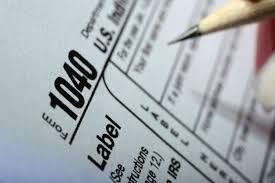The thought of filing your 2019 taxes could be stressful for many Americans. The best way to reduce this anxiety is to plan ahead. Fortunately, the federal government gives taxpayers lots of ways to reduce their tax bills, with a host of deductions, credits, and other breaks designed to help you manage your taxes effectively.
There are hundreds of provisions that can help taxpayers, but most of the tax benefits that ordinary people are able to get come from just a handful of provisions. The five tax breaks below will provide the most tax savings over the coming five years, according to the latest estimates from the Joint Committee on Taxation. We’ll look at them more closely to help you figure out if you might be able to take advantage of them.
1. No tax on health insurance from your employer
If you get health insurance coverage through your job, then you benefit from the biggest tax break the government offers. The millions of Americans who receive employer-provided health insurance don’t have to pay taxes on the portion of premiums that employers pay on their behalf.
Most workers never even realize how much health coverage costs their employers, and you might mistakenly think that whatever employee portion you might have to pay covers the entire cost. But overall, the federal government will miss out on $870 billion in taxes over the five years ending in 2022 by not treating the value of health insurance as income. That’s up by $16 billion from last year’s projections, and rising healthcare costs are likely to keep that figure moving upward in the years to come.
2. Lower taxes on dividends and long-term capital gains
Tax reform lowered ordinary income tax rates, but it also kept in place favorable rates on dividends and long-term capital gains. Investors can still benefit from rates of 0%, 15%, or 20% on this income from these sources, depending on the tax bracket they’re in.
In total, these lower rates are likely to save taxpayers $656 billion in the five-year period, up $7 billion from last year’s projections. With some presidential candidates looking closely at whether to change or eliminate this provision, you can expect dividends and capital gains to remain in the spotlight over the coming year.
3. No taxes on 401(k) contributions
Next, 401(k) plans and similar defined contribution plans offered by employers give participating workers the ability to save for retirement in a tax-favored manner. Contribution limits are high, letting employees save up to $19,500 in 2020 if they’re younger than 50 or $26,000 if they’re 50 or older.
It’s true that 401(k) plans are popular, and the government estimates that it will lose $648 billion in tax revenue over five years because of how they’re taxed. That’s up $24 billion from last year’s estimates. Admittedly, the IRS eventually does get its way with most 401(k) contributions, because most withdrawals are subject to income tax. Nevertheless, with careers spanning decades, it could take a long time for the government to collect its share on these savings from retirement plans.
4. Child tax credits
The child tax credit offers money to families with qualifying children 16 or younger. The size of the credit doubled in 2018 to $2,000 per child, and $1,400 of that amount can get refunded to taxpayers, even if they don’t owe any other income taxes.
Taxpayers should save $595 billion over the five-year period because of the child tax credit. That’s up $69 billion from last year’s estimates, showing just how much the provision gets used.
5. No taxes on pension plan contributions
Last, in addition to 401(k) plans, some employees get pension benefits from their employers. The defined benefit plans into which companies contribute on behalf of their workers aren’t treated as income at the time employers put the money into the plans. Instead, workers only pay tax when they receive benefits in retirement.
Over five years, these provisions cost the federal government $519 billion in potential tax revenue, up by $49 billion from last year’s estimates. With fewer employers providing pensions, however, it’s likely that this number will fall over time.
Save what you can
Not everyone will benefit from these five provisions, but for those who do, the savings can be extensive. Many people have ideas to change tax laws in the future, however, so you’ll want to look closely at proposals to see if they would jeopardize these tax breaks.
The $16,728 Social Security bonus most retirees completely overlook
If you’re like most Americans, you’re a few years (or more) behind on your retirement savings. But a handful of little-known “Social Security secrets” could help ensure a boost in your retirement income. For example: one easy trick could pay you as much as $16,728 more… each year! Once you learn how to maximize your Social Security benefits, we think you could retire confidently with the peace of mind we’re all after.

COMMENTS